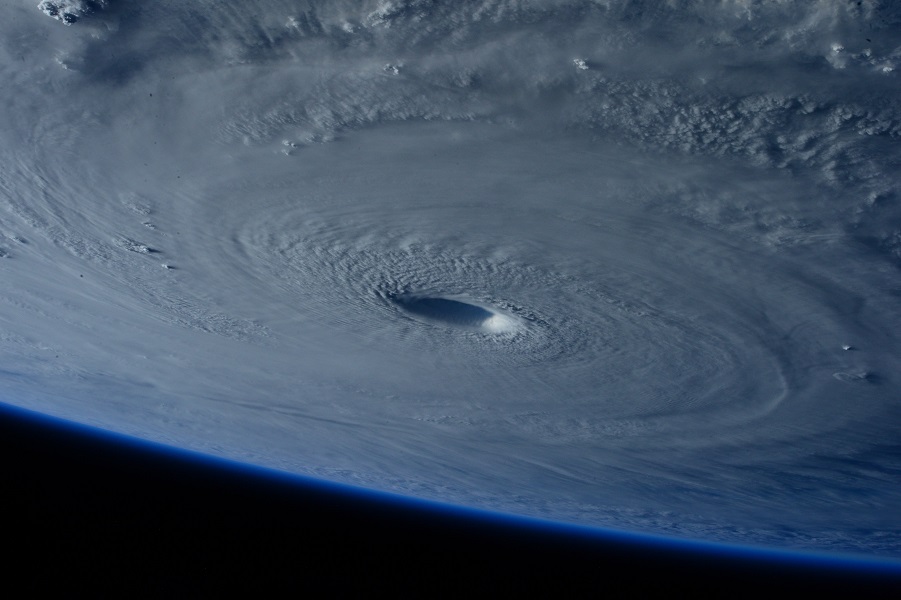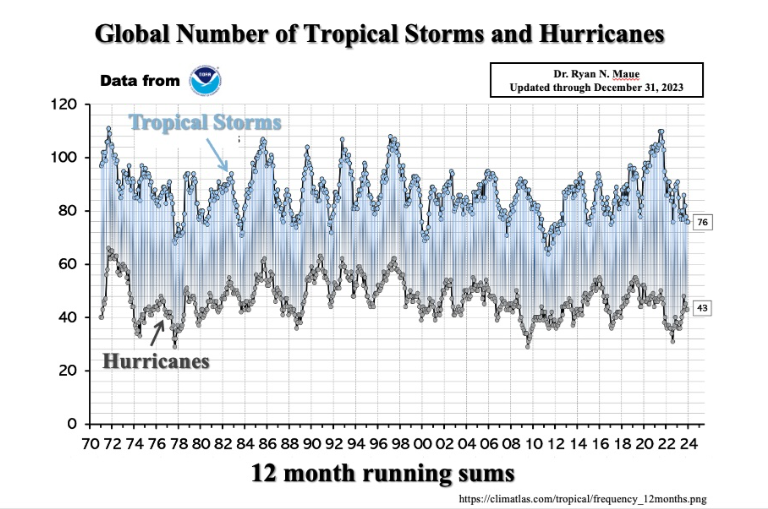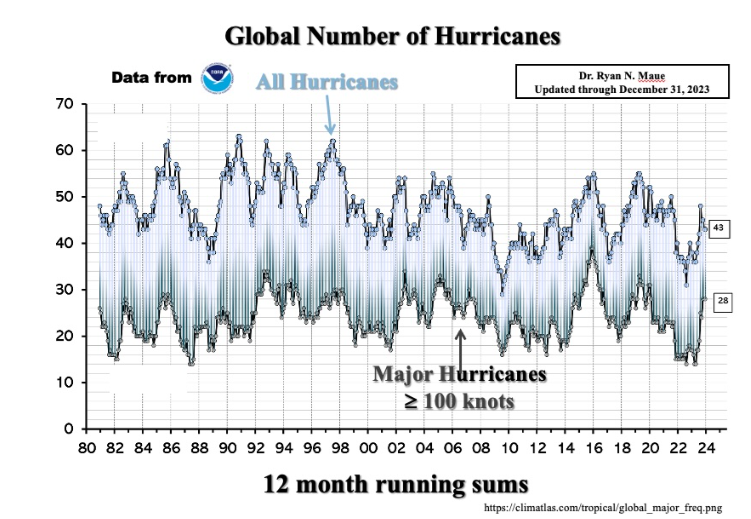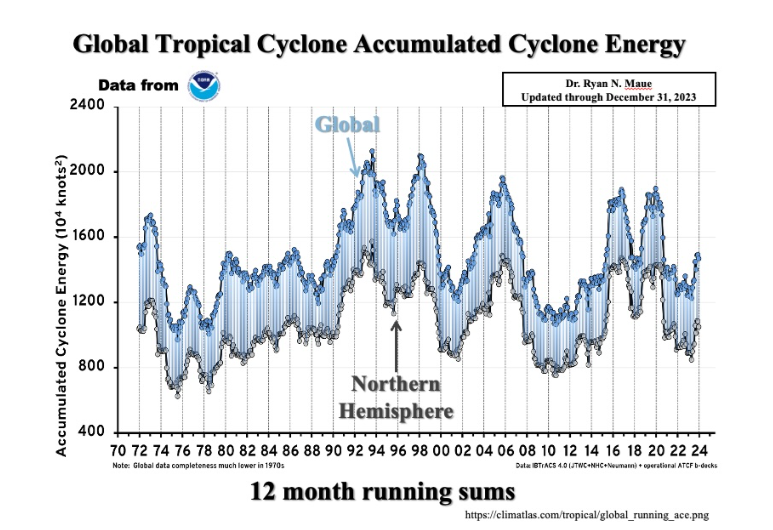Tropical Cyclone One is puttering about northwest of the Yucatan and projected to hang a hard left into the heart of Mexico. It’s not American landfall, and it’s not a real hurricane yet, so pooh on that. But it is as good a time as any to abuse a few Climate Cult articles of faith.
The common ones are that there are more hurricanes, they are stronger and larger, they come more often (one after another), or they are just meaner ombres. I made that last one up. These are all claims we are forced to endure every year from June to November. None of them happens to be true, to which we can now add a new shibboleth killer. Historically, a warmer planet leads to fewer landfalls than a cooler one, so global warming isn’t producing the coast-slamming terrorism advertised.
That’s important. More, larger, stronger, and more frequent don’t mean much if cyclones form and then wander around the ocean. They need to devastate significantly built-up areas along the coastline. Progressives have worked long and hard buying and developing oceanfront – perhaps for this very purpose. Add a little inflation, and what used to be millions of dollars in damage becomes billions in the blink of an eye. Billion sounds scarier, which can then be used to bilk everyone else with fear campaigns about soft lifestyles and their impact on storm damage to liberal-oceanview infrastructure.
Another important factor in hurricane frequency is the difference in temps between the equator and the poles. The greater the disparity, warmer oceans, and colder ice caps, the more likely we are to have more, stronger hurricanes. That’s according to professor and climatologist David Legates, who also explained why we will see fewer landfalls when the world is generally warmer.
I think there was a study in 2001 by boost that looked at, looked at, yeah, land falling hurricanes going back to 1600. And in particular what that group found was from 1600 to 2000 in New England. This is Peterson, Massachusetts, Providence, Rhode Island area that from that 400 year period, the most active period was the 19th century. And I’ll ask the question rhetorically, what was the coldest period between 1600 and 2000? And the answer of course is the 19th century. Same research was done by Kerry Mock at the University of South Carolina. He did tropical cyclones impacting Charleston from 1778 to 1998.
The most active period in Charleston was the 19th century, which happened to be the coldest. And then a colleague of mine at LSU Kalu did some research in southern China, and he wrote remarkably, the two periods of typhoon strikes in Guangdong coincide with two of the coldest and driest periods in northern and central China. So the take home message here is that essentially if we have colder periods, we will get more hurricane activity.
So yes, history suggests that our journey out of the Little Ice Age to the present warming bump, and it’s just a bump, means fewer landfalls. The coastal growth guarantees that the landfalls we do have will cause more damage. That, in turn, produces hysteria that feeds the climate cult loop – a set of narratives that, as noted above, relies on the other lies for support.
The four horsemen are the number of storms, number of hurricanes, intensity (intense hurricanes and/or accumulated energy), and landfall frequency. The graphs accompanying the linked article show how science contradicts fearmongering.
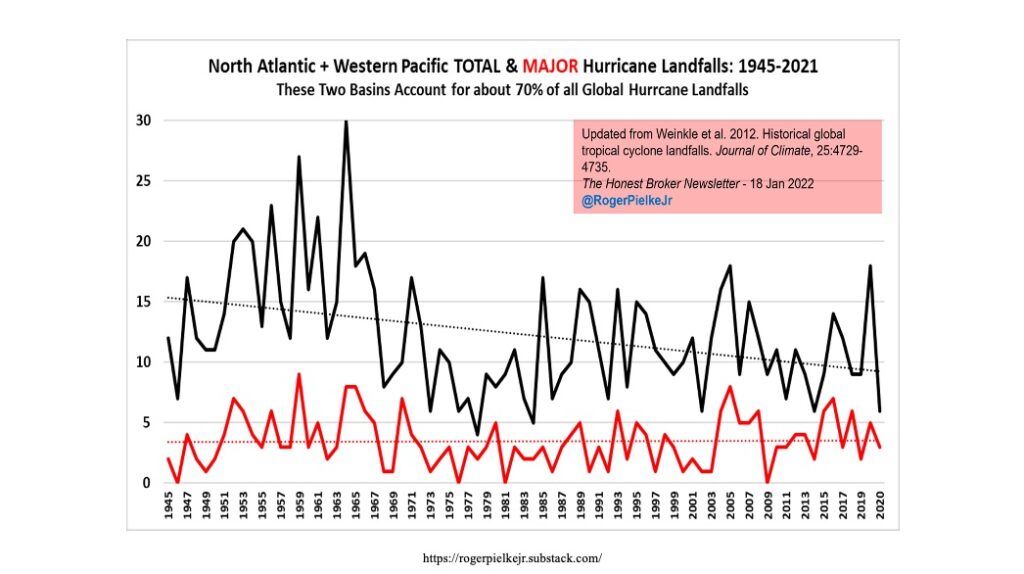
Overlay one of the more popular atmospheric CO2 graphs, and you’ll find no correlation between that and any of this.
Feel free to share whatever you see as the need arises. Facebook users should use caution. Zuckerberger Meristerberger’s platform might not take kindly to science that contradicts the approved articles of faith.
